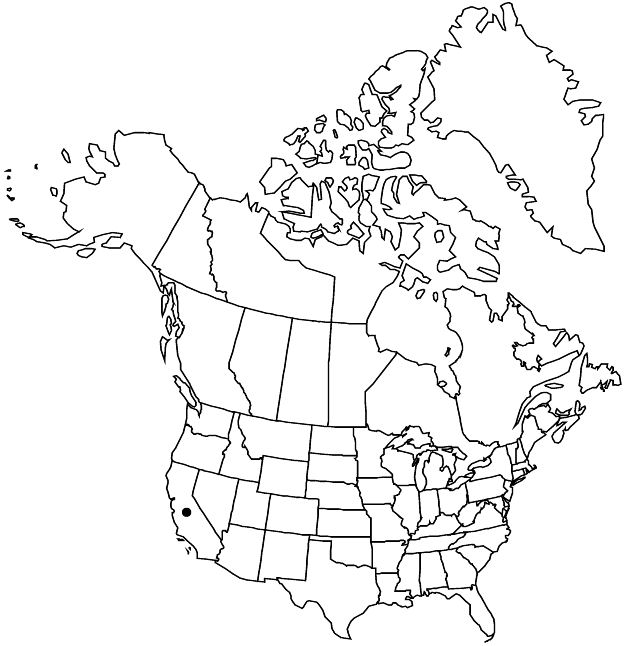Ceanothus griseus
in M. van Rensselaer and H. McMinn, Ceanothus, 210. 1942.
Shrubs, sometimes arborescent, evergreen, 0.5–4 m. Stems erect, ascending to arcuate, rarely prostrate, not rooting at nodes; branchlets green, not thorn-tipped, angled in cross section, flexible, sparsely puberulent or glabrous. Leaves: petiole 5–10 mm; blade flat to cupped, ovate to suborbiculate, 10–45 × 10–30 mm, base obtuse to rounded, margins denticulate, ± revolute, teeth 21–45, apex obtuse to rounded, abaxial surface pale green, puberulent to densely villosulous, veins prominently raised, puberulent to villosulous, adaxial surface dark green, glabrate; 3-veined from base. Inflorescences axillary, paniclelike, 2–7 cm. Flowers: sepals, petals, and nectary blue. Capsules 3–4 mm wide, weakly lobed at apex; valves smooth, viscid, not crested.
Phenology: Flowering Mar–Jun.
Habitat: Sandy or rocky flats and slopes, maritime chaparral, open sites in pine and cypress forests.
Elevation: 10–200 m.
Discussion
Ceanothus griseus is distributed along the coast from Mendocino County south to Santa Barbara County. Plants with incompletely revolute leaf margins and abaxial surfaces intermediate or similar to those of C. thyrsiflorus are encountered frequently. Whether this pattern is a result of primary or secondary intergradation is not known. Prostrate plants with wide elliptic leaves have been called C. griseus var. horizontalis McMinn; they retain their stature under cultivation. Putative hybrids with C. dentatus have been named C. ×lobbianus Hooker (M. Van Rensselaer and H. McMinn 1942). Ceanothus ×veitchianus Hooker is a rare intersubgeneric hybrid between C. griseus and C. rigidus, first collected by William Lobb near Monterey in 1853, that is cultivated in Great Britain as an ornamental.
Selected References
None.
